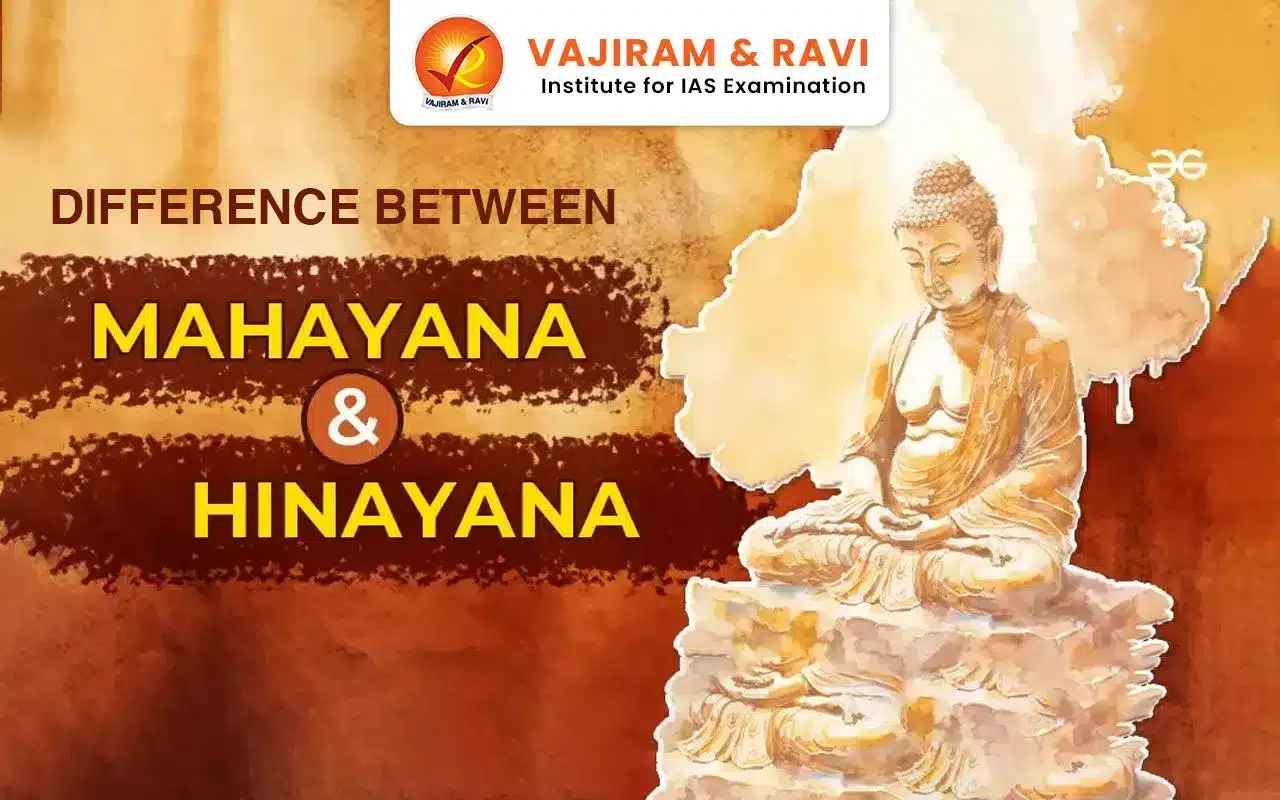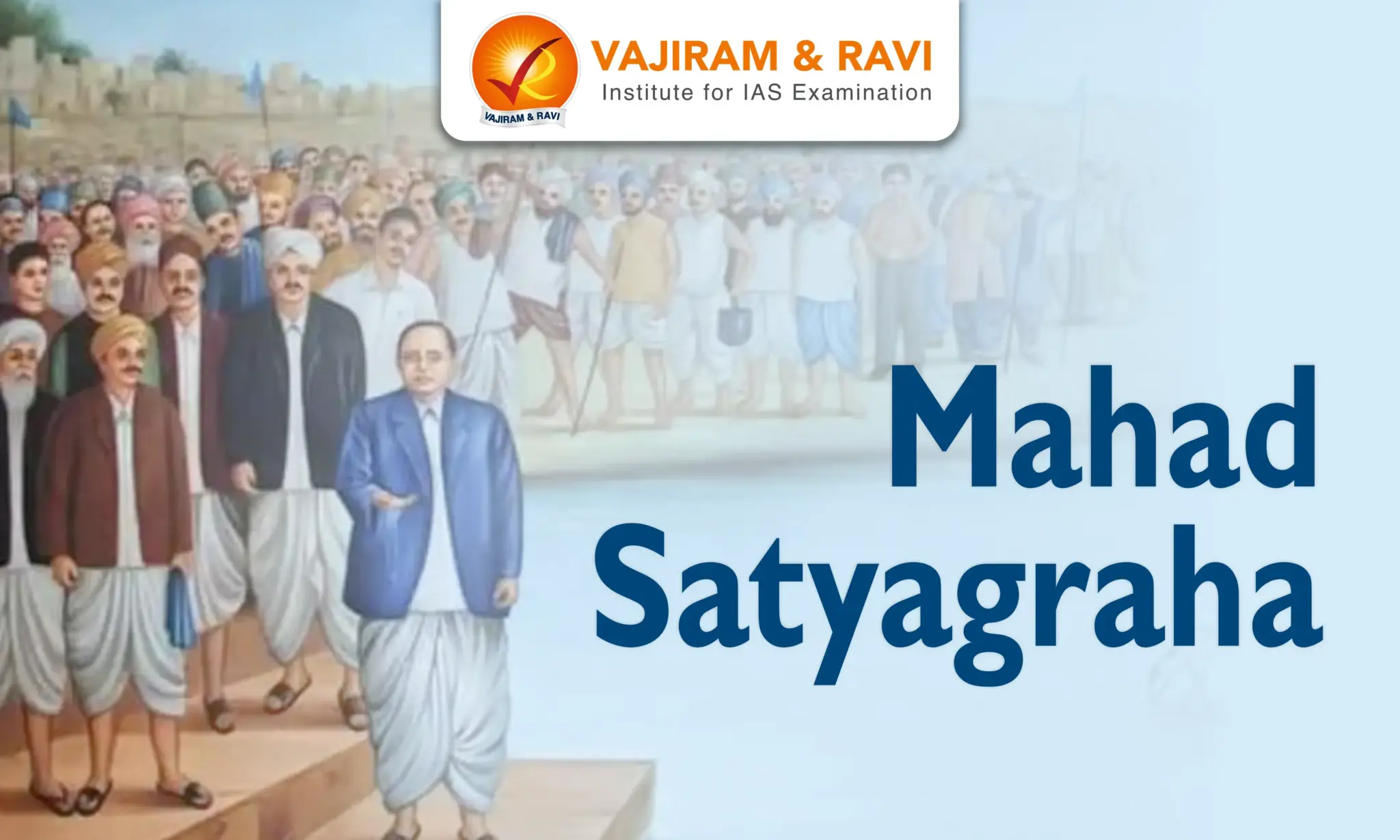After Gautama Buddha’s demise around 400 BC, Buddhism split into two significant sects: Mahayana and Hinayana. While both paths share the fundamental teachings of the Buddha, their philosophical and practical approaches have evolved distinctly, reflecting the religion's adaptability to different cultural and historical contexts.
Mahayana Buddhism acknowledged Buddha’s divinity and embraced the practice of idol worship. While Hinayana emphasised achieving personal salvation through self-discipline and meditation.
Origins and Historical Development
The terms Hinayana and Mahayana, signifying the lesser and greater vehicles respectively, first emerged in the Prajnaparamita Sutras around the 2nd century. These two major branches of Buddhism represent distinct characteristics and historical developments.
- Oral tradition: Initially, all Buddha’s teachings were transmitted orally for about 250 years.
- Written record: Around 250 BCE, King Ashoka had the teachings recorded in Pali, a simpler form of Sanskrit. Simultaneously, the writings were translated into Sanskrit for use in North India.
- Migration to South: As the Pali scriptures moved southward, they emphasized maintaining the purity and precision of the teachings.
- Sanskrit rejection: Ashoka’s scholars rejected Sanskrit texts due to their inclusion of mystical Hindu concepts.
- However, Sanskrit books remained popular in the north and laid the groundwork for the Mahayana tradition.
- Cosmic beliefs: Mahayana Buddhism became linked with concepts of cosmic energy and a vast universe.
- Disagreement on lay participation:
- The debate intensified over whether laypeople should follow the Buddha Way.
- The Theravada tradition abandoned this idea, while the Mahayana emphasized lay participation.
Key Difference Between Mahayana and Hinayana
The division of Buddhism into Mahayana and Hinayana branches occurred during the Fourth Buddhist Council in the 1st century CE, under the patronage of the Kushan emperor Kanishka. This council convened at Kundalvana in Kashmir to resolve disputes among different sects.
- Mahayana (meaning “Great Vehicle” in Sanskrit):
- It believed in the divinity of the Buddha.
- Encouraged idol worship within Buddhism.
- Followers of the Mahayana sect can be found in China, (South) Korea, Japan, and Tibet.
- Scriptures were written in Sanskrit.
- Thinkers: Nagarjuna, Aryadeva, Asanga and Vasubandhu
- Sub-schools: Madhyamika, Yogachara school
- Hinayana (meaning “Small Vehicle” in Sanskrit):
- It did not believe in the divinity of the Buddha, rather it emphasised individual salvation through self-discipline and meditation.
- Followed by Sri Lanka, Myanmar, Thailand, Cambodia, and Laos.
- Scriptures were written in Pali.
- Both the Hinayana and Mahayana schools outline paths for shravakas (listeners to Buddha's teachings) and pratyekabuddhas (self-realisers) to reach the purified state of an arhat (liberated being), and for bodhisattvas to attain Buddhahood.
- Both branches aim to achieve enlightenment and inner peace through different interpretations and practices.
Philosophical Differences
| Aspect | Mahayana Buddhism | Hinayana (Theravada) Buddhism |
| Ideal |
- A Bodhisattva is an enlightened being who has the potential for complete enlightenment but chooses to remain in the cycle of rebirth. - Their purpose is to guide and assist others in achieving liberation. - This ideal is central to Mahayana Buddhism. |
- Does not emphasise the Bodhisattva ideal. - Focuses on individual enlightenment. - The ultimate goal is to attain the state of an Arhat, a perfected being who has achieved Nirvana. |
| Nirvana or enlightenment |
- It aims for the individual enlightenment. - Seeks to attain the state of an Arhat. |
- It emphasises the attainment of Buddhahood. - Buddhahood represents the highest state of enlightenment. - Mahayana practitioners aspire to guide others toward liberation. |
Practices and Rituals
| Aspect | Mahayana Buddhism | Hinayana Buddhism |
| Monastic and Lay Persons | - It acknowledges monastic tradition but encourages active participation among layperson's followers. |
- Strong emphasis on the monastic tradition. - Monks and nuns play a central role in preserving and practicing the teachings of the Buddha. |
| Meditation and Rituals |
- Both traditions practice forms of meditation:
|
- Incorporates additional practices:
|
| Veneration of Bodhisattvas |
- Reveres the Buddha. - It also venerates various Bodhisattvas, such as:
|
- Revere the Buddha. - Does not emphasise Bodhisattvas as prominently. |
| Sacred Texts |
- Mahayana Sutras:
|
- Pali Canon (Tipitaka):
- Contents:
|
Difference between Mahayana and Hinayana UPSC PYQs
Question 1: With reference to the religious history of India, consider the following statements: (UPSC Prelims 2016)
- The concept of Bodhisattva is central to the Hinayana sect of Buddhism.
- Bodhisattva is a compassionate one on his way to enlightenment.
- Bodhisattva delays achieving his own salvation to help all sentient beings on their path to it.
Which of the statements given above is/are correct?
(a) 1 only
(b) 2 and 3 only
(c) 2 only
(d) 1, 2 and 3
Answer: (b)
Question 2: With reference to the religious history of India, consider the following statements: (UPSC Prelims 2020)
- Sthaviravadins belong to Mahayana Buddhism.
- Lokottaravadin sect was an offshoot of the Mahasanghika sect of Buddhism.
- The deification of Buddha by Mahasanghikas fostered Mahayana Buddhism.
Which of the statements given above is/are correct?
- 1 and 2 only
- 2 and 3 only
- 3 only
- 1, 2 and 3
Answer: (b)
Question 3: Consider the following: (UPSC Prelims 2019)
- Deification of the Buddha
- Treading the path of Bodhisattvas
- Image worship and rituals
Which of the above is/ are the features/ features of Mahayana Buddhism?
- 1 only
- 1 and 2 only
- 2 and 3 only
- 1, 2 and 3
Answer: (c)
Last updated on December, 2025
→ Check out the latest UPSC Syllabus 2026 here.
→ Join Vajiram & Ravi’s Interview Guidance Programme for expert help to crack your final UPSC stage.
→ UPSC Mains Result 2025 is now out.
→ UPSC Notification 2026 is scheduled to be released on January 14, 2026.
→ UPSC Calendar 2026 is released on 15th May, 2025.
→ The UPSC Vacancy 2025 were released 1129, out of which 979 were for UPSC CSE and remaining 150 are for UPSC IFoS.
→ UPSC Prelims 2026 will be conducted on 24th May, 2026 & UPSC Mains 2026 will be conducted on 21st August 2026.
→ The UPSC Selection Process is of 3 stages-Prelims, Mains and Interview.
→ UPSC Result 2024 is released with latest UPSC Marksheet 2024. Check Now!
→ UPSC Prelims Result 2025 is out now for the CSE held on 25 May 2025.
→ UPSC Toppers List 2024 is released now. Shakti Dubey is UPSC AIR 1 2024 Topper.
→ UPSC Prelims Question Paper 2025 and Unofficial Prelims Answer Key 2025 are available now.
→ UPSC Mains Question Paper 2025 is out for Essay, GS 1, 2, 3 & GS 4.
→ UPSC Mains Indian Language Question Paper 2025 is now out.
→ UPSC Mains Optional Question Paper 2025 is now out.
→ Also check Best IAS Coaching in Delhi
Difference between Mahayana and Hinayana FAQs
Q1. What is the primary difference between Mahayana and Hinayana?+
Q2. What does the term "Hinayana" mean?+
Q3. How do Mahayana and Hinayana differ in their interpretation of the Buddha's teachings?+

















